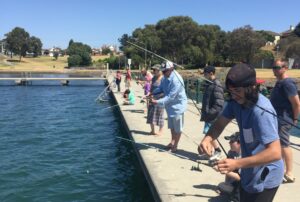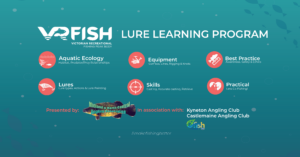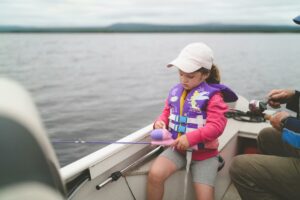May 1, 2018
This year has proven to be a phenomenal year for Victoria’s snapper stocks with record recruitment found in Port Phillip Bay. 2018 is the best year class of snapper stock in the past 26-years of sampling by the Victoria Fisheries Authority leading to predications of strong catches in 3-4 years time.
Port Phillip Bay is the major source of replenishment for snapper in our western coastal waters. Annually the Victorian Fisheries Authority (VFA) completes snapper trawl surveys in Port Phillip Bay to track the stocks and to gain an understanding on what drives their populations. Dr Paul Hamer, Senior Research Scientist at VFA, has been conducting the surveys for 19-years. These surveys provide information on the replenishment of snapper populations from Portland to Wilsons Promontory, including Port Phillip Bay and Western Port.
To ensure consistency of the data, these surveys are conducted during the same period each year, from around mid-March to the first week of April, and using the same equipment. The surveys are conducted during the night as that is when the juvenile snapper are more effectively caught. Nine areas across the bay are surveyed to coincide with the end of the larval settlement period. They survey anywhere from 7-metres in depth to the middle of the bay where it is 24-metres in depth. The highest abundance of the juvenile snapper is typically found within 10 – 18-metres depth, where there is sandy, intermediate sediments which provide the right food and habitat for the fish. The VFA’s scientists have found that snapper on average have a good spawning season every 5 to 8 years.
Environmental conditions have an immense impact on the replenishment of the snapper stocks. The VFA’s scientists have found that the ideal temperature has a big impact on the spawning of snapper, with the optimal temperature being between 18 and 22 degrees Celsius. Between November, December and when the temperature begins to drop again in March is the best time for the snapper. Their research over the past four years suggests that snapper are spawning twice per year when the changes in temperature occur. Combined with the ideal temperature, the water flow from the Yarra River into Port Phillip Bay can create ideal conditions for spawning snapper. During the spring-time, middling flows, between 1000 – 1500 megalitres per day, allow for the right amount of flow to deliver critical nutrients to plankton which the larvae feed on.
Recreational anglers who target snapper can expect to see great fishing opportunities over the coming years. In four years, the 2018 stock class will reach legal catch size, around 28 – 30 cm. In 2025, they will have grown to an adult size of over 40 cm and migrate to the coast where they spent their adult life.
There is also good news for King George whiting which also seen an increase in their stock recruitment with 2018 identified as their third best season on record. The whiting survey’s began in 1998 with samples taken across eight nursery points in Port Phillip Bay. The whiting surveys are conducted in October and November and a small research net is used to sample the juveniles in seagrass. Whiting larvae drifts into the bay from coastal spawning sites. Environmental factors also impact the recruitment of whiting, with westerly winds across the bay pushing the larvae into the bay and helping the larvae develop. It takes whiting two years to grow to a catchable size and at four years they typically leave the bay and move to the sea.








